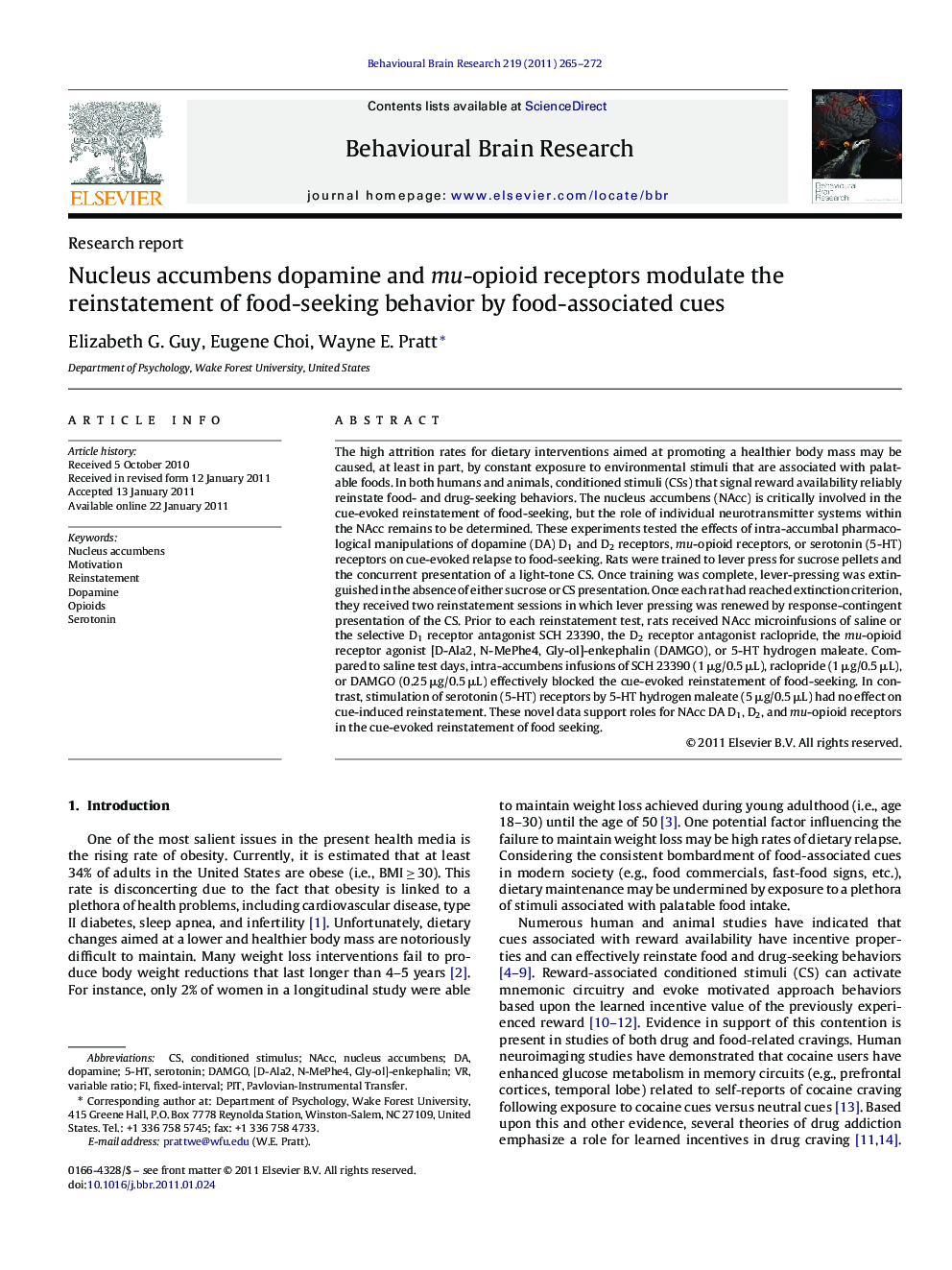| Article ID | Journal | Published Year | Pages | File Type |
|---|---|---|---|---|
| 4313812 | Behavioural Brain Research | 2011 | 8 Pages |
The high attrition rates for dietary interventions aimed at promoting a healthier body mass may be caused, at least in part, by constant exposure to environmental stimuli that are associated with palatable foods. In both humans and animals, conditioned stimuli (CSs) that signal reward availability reliably reinstate food- and drug-seeking behaviors. The nucleus accumbens (NAcc) is critically involved in the cue-evoked reinstatement of food-seeking, but the role of individual neurotransmitter systems within the NAcc remains to be determined. These experiments tested the effects of intra-accumbal pharmacological manipulations of dopamine (DA) D1 and D2 receptors, mu-opioid receptors, or serotonin (5-HT) receptors on cue-evoked relapse to food-seeking. Rats were trained to lever press for sucrose pellets and the concurrent presentation of a light-tone CS. Once training was complete, lever-pressing was extinguished in the absence of either sucrose or CS presentation. Once each rat had reached extinction criterion, they received two reinstatement sessions in which lever pressing was renewed by response-contingent presentation of the CS. Prior to each reinstatement test, rats received NAcc microinfusions of saline or the selective D1 receptor antagonist SCH 23390, the D2 receptor antagonist raclopride, the mu-opioid receptor agonist [D-Ala2, N-MePhe4, Gly-ol]-enkephalin (DAMGO), or 5-HT hydrogen maleate. Compared to saline test days, intra-accumbens infusions of SCH 23390 (1 μg/0.5 μL), raclopride (1 μg/0.5 μL), or DAMGO (0.25 μg/0.5 μL) effectively blocked the cue-evoked reinstatement of food-seeking. In contrast, stimulation of serotonin (5-HT) receptors by 5-HT hydrogen maleate (5 μg/0.5 μL) had no effect on cue-induced reinstatement. These novel data support roles for NAcc DA D1, D2, and mu-opioid receptors in the cue-evoked reinstatement of food seeking.
Research highlights► Combining behavioral pharmacology with the use of a cue-induced reinstatement of food-seeking behavior paradigms can provide insight into the neural mechanisms that may promote dietary relapse. ► In rats, the inhibition of dopaminergic D1 or D2 receptors within the nucleus accumbens blocked the reinstatement of food-seeking behavior in the presence of conditioned stimuli that were previously associated with food delivery. ► Stimulation of rat nucleus accumbens mu-opioid receptors, but not serotonin receptors, also attenuated the reinstatement of food-seeking behaviors by food-associated cues.
